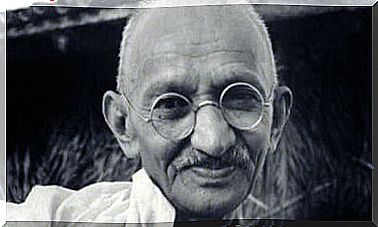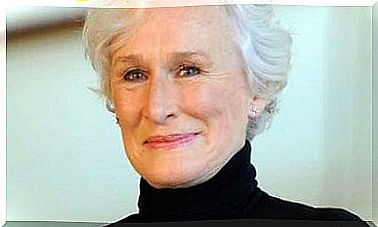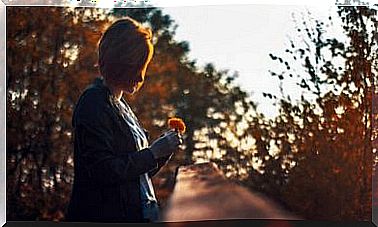Olive Oatman, The Woman With The Blue Tattoo And The Double Captivity
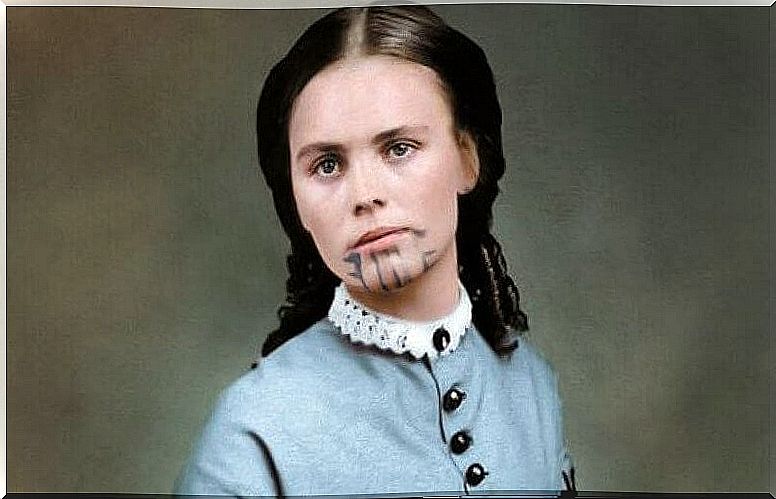
It is possible that more than one has come across this story at some time. It undoubtedly attracts the serene face of its protagonist, his gaze and above all, that unique tattoo where the ethnic, the wild, some would say, is hardly integrated with that western image that every good educated and well-placed lady used to show in the middle. 19th century.
However, Olive Oatman was no ordinary Arizona lady at that time. She was a woman who suffered several traumas throughout her life, someone who tried to adapt and survive every setback with which destiny wanted to hit her. And he survived, there is no doubt, because hers was something admirable, a whole odyssey that was collected in the books ” Captivity of the Oatman Girls” (1856) or in ” The blue tattoo: The life of Olive Oatman”, by Margot Miffin.
However, there is something that was not talked about in those years. Olive Oatman never felt so free as in those days when she lived with the Mohaves. In fact, almost 100 years later, a small town was named after her, a corner where that young woman lived in the company of the natives and where, curiously, she was happier than ever.

Olive Oatman, years of captivity, years of freedom
We are in 1850 and in the arid, but always majestic lands of the Colorado, in the United States. Along a lonely and stony road we can see a caravan of settlers making their way with their animals, their cars and their infinite hopes to settle in what was known then as the “new world”.
However, the new world was already inhabited, it had legitimate owners who were not going to give in to the desire for conquest of a group of foreigners with an air of greatness. Among those settlers was the Oatman family, Mormons who stumbled forward under the fanaticism of a spiritual leader, the pastor, James C. Brewster. It was that character who inevitably led them to disaster. They knew nothing of those lands, nor did they want to hear the warnings. Their purpose was so firm and their faith so blind that they did not realize that this land already had owners, a wild and quite violent ethnic group: the Yavapai.
The Indians wiped out practically the entire group of pioneers who led that expedition. After the massacre, they decided to take two white girls as slaves, they were 14-year-old Olive Oatman and her 8-year-old sister Mary Ann. After the drama suffered, the two little girls were awaited by something that was not much better, they had to endure almost a year of abuse, lack and continuous humiliation on the part of those natives who so despised the white man.
However, her luck would change when a neighboring tribe learned of the girls’ story.
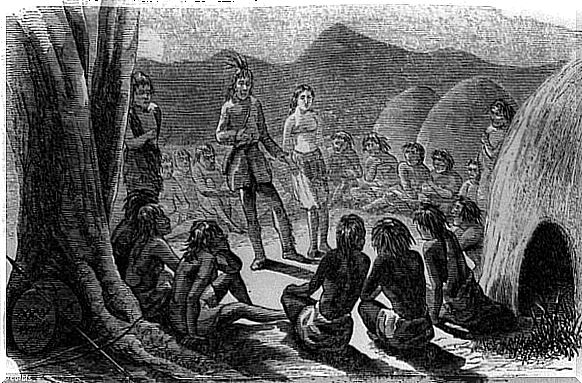
That tribe was the Mohave. It was they who decided to rescue them by making an exchange: they gave several horses and blankets in exchange for the white girls. The deal was sealed, and Olive and her younger sister began a new life, a life that was a U-turn from the homelessness to which they had been subjected. They were adopted by the Espanesay and Aespaneo family, welcomed by a land full of beauty, land with wheat fields and poplar forests where to sleep every night in the company of a friendly people.
However, there were also times of difficulties, years of drought where the town went hungry and where many children died, including Mary Anne, Olive’s sister. She was allowed to bury her according to her own religion, even gifting her a piece of land where Olive planted a wildflower garden.
Olive Oatman’s invisible tattoo
Olive Oatman was in her early 20s when a messenger from Fort Yuma arrived in Mohave Village. They had learned of the presence of a white woman and were demanding her return. It should be said that this tribe never held the young woman captive, they always told her that she was free to leave whenever she wanted, however Olive never had a special interest in returning to what the white man called civilization. It was good. It felt good.
However, everything changed when she found out that the one who claimed her was Laurence, her little brother, who she believed died in the brutal attack with the Yavapai where she lost her family. He decided to leave, decided to return with his people and the Mohave, they hardly accepted it. However, that was a decision the Olive would regret years later.
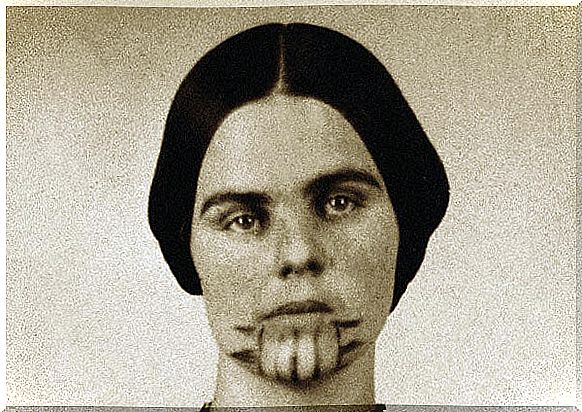
The woman with the blue tattoo
So they called her, the “woman with the blue tattoo . ” Because the Victorian costumes that she was immediately dressed in to erase her past with the Indians could not cover the tattoo that adorned her chin. However, what not everyone knew is that his arms and legs also had striking tattoos that were never seen again in the sunlight and the Colorado wind.
After her return to civilization, everything went very fast for Olive Oatman. A book was written about her story, and part of the royalties earned were offered to her for her personal use, and she put it to good use. They served him to study a university degree and to also pay for the training of his brother Laurence. Later, he began lecturing all over the United States to talk about his experience, the Yavapai and the Mohave.
However, what the written book told about his history and what people expected to hear in his lectures were anecdotes about the savagery of the Indians, about their ignorance and inhumanity. Olive, under pressure, had to lie to survive in that town that had now welcomed her into a new stage of her life.
In 1865 she married a wealthy rancher. A man who only asked one thing: that he forget his past, that he leave the conferences and that to go out, he put on a veil that covered the tattoo. He did so, letting time go by like this, drop by drop. Year after year and subjected to what was perhaps the worst captivity of her life, a new tattoo originated in her: that of pain and the memory of those years with the Mohaves, in which her existence was satisfactory, free and happy….
Olive Oatman spent much of her life with severe headaches, depression and stays in clinics in Canada where she tried to cure her longing for her family, the Mohaves. He passed away at the age of 65.





